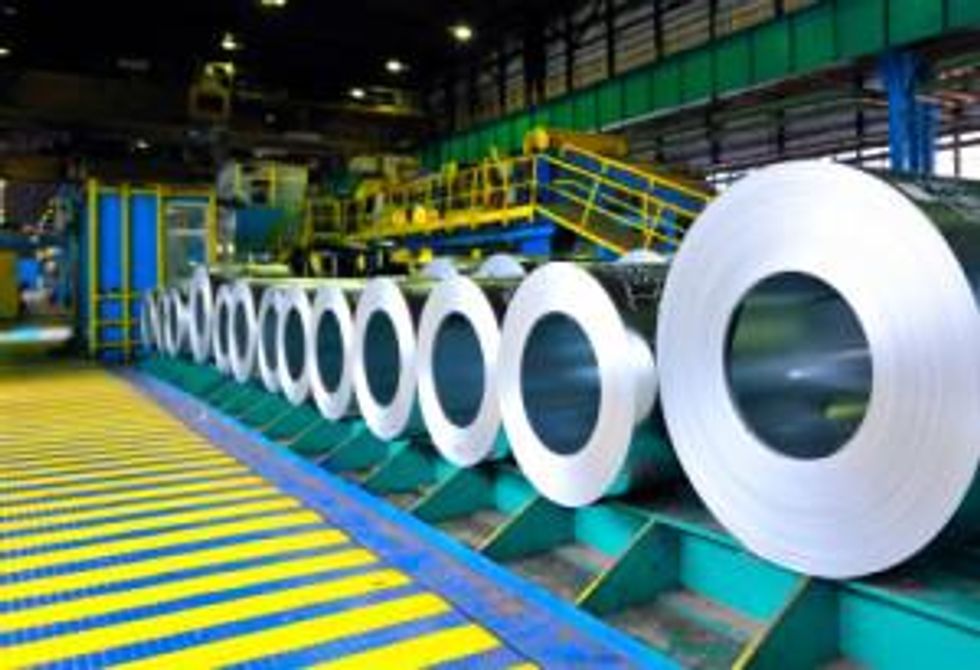Bullish news from Chinese manganese buyers may mean better times ahead for steel — and vanadium.
Chinese metal buyers see good things ahead for the steel business.
Imports of manganese into China jumped nearly 100 percent year-on-year during January, with a total of 1.36 million metric tons (MT) of manganese ore and concentrate shipped into the country for the month, Platts reported.
That is also an 18.8-percent increase over the previous month; China imported 1.15 million MT during December 2012.
The interesting thing about these figures is the reason for the jump. Traders have attributed the increased appetite to strength that will supposedly come to the steel market in 2013.
A source told Platts that some market participants expect Beijing to spark more pro-growth initiatives in the country this year. If that happens, construction projects will raise demand for steel.
That would be great news for the global steel business, which had a mediocre 2012. Prices for many steel products fell sharply in the second half of the year, although a slight rally was seen late in the fourth quarter.
It would also be positive news for suppliers of steelmaking metals. A China-induced steel surge would mean more demand not only for manganese, but also for cobalt and, of course, vanadium.
More signs of life
Chinese steel producers themselves see upside in the industry this year.
Baoshan Iron & Steel Company’s (SSE:600019) chairman, He Wenbo, said he expects improvement in the market. “The steel industry hit a trough last year,” he said in an interview this week with the National People’s Congress in Beijing, as quoted by Bloomberg. “This year would be better.”
He did, however, express caution about the scope of a potential bounce, noting that he doesn’t anticipate a large increase in demand.
Optimism for the industry also reigns in Russia, according to reports from local media sources. Alexander Morozov, chief economist at HSBC in Russia, recently told The Voice of Russia that the steel industry could “benefit from the surge in global demand for steel and from a recovery in steel prices.”
Data from other parts of the world also signals that steel may be headed for an upturn.
The central bank of Chile recently reported that both its steel imports and exports grew significantly in 2012, according to Platts.
Total imports jumped 12.5 percent on the year, to $2.3 billion. Exports had an even bigger rise, increasing 25 percent for a total of $739.2 million.
Too much production?
But some believe structural changes are needed to turn the steel business around.
The Organisation for Economic Co-operation and Development recently released a study that indicates that between 2007 and 2011, the European steel industry was weighed down by overcapacity, with the excess ranging from 26 million MT to as much as 123 million MT per year, according to the Financial Times.
The CEO of Austrian steelmaker Voestalpine (OTC Pink:VLPNF) agrees: Wolfgang Eder told the Financial Times that Europe’s steel business is in a “massive structural crisis.”
Eder also said he believes overcapacity in the sector is running at 40 to 50 million MT, or about 25 percent.
This sentiment was echoed by Standard & Poor’s last week. In an industry report, the group noted that US steel consumption showed healthy growth in 2012, increasing 8 percent. However, steel prices remained sluggish due to “new production entering the market.”
The authors further said that steel shipments and consumption should continue to rise in 2013, but cautioned that “absent a permanent reduction in domestic capacity or a drop in imports, the increase in price and profits from 2012′s depressed levels will be small.”
Big output from emerging markets
Even in juggernaut China, there is suspicion that steel output may be ahead of itself.
The country’s National Development and Reform Commission reported in late February that Chinese steel demand rose in the fourth quarter of 2012, according to a People’s Daily Online article. However, the group noted that excessive supply is weighing on the market.
Li Xinchuang, deputy secretary of the China Iron and Steel Association, agreed with this sentiment at a recent industry conference in Beijing. He noted that Chinese crude steel production capacity now stands at 970 million MT. Domestic demand, however, lags significantly, at just 660 million MT forecast for 2013.
Fellow BRIC producer India is also ramping up its steel production capacity.
The government reported this week that modernization and expansion projects are underway at seven major steel plants across the country, with the goal being to up overall output.
Projects now under construction include the 3-million-MT-per-year Greenfield Integrated Steel Plant at Nagarnar, Chhattisgarh.
Securities Disclosure: I, Dave Forest, do not hold equity interest in any companies mentioned in this article.
